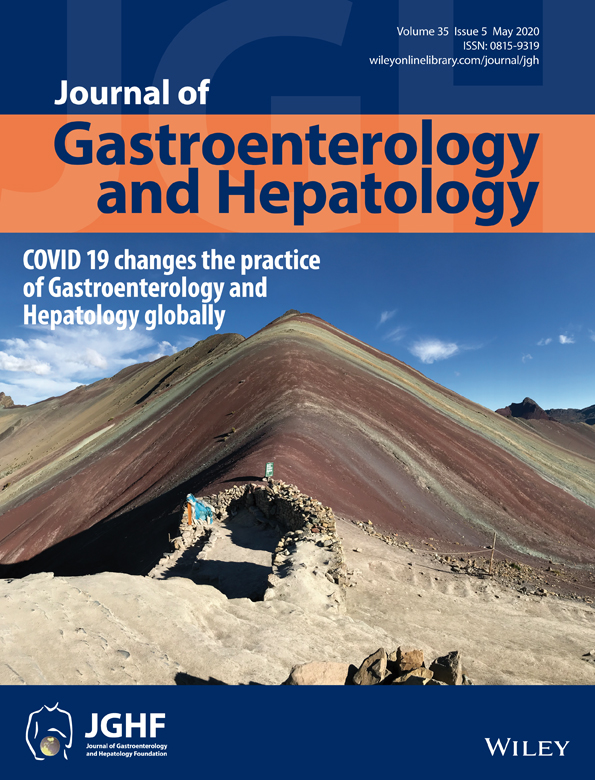The characteristics and risk factors of hepatocellular carcinoma in nonalcoholic fatty liver disease without cirrhosis
Abstract
Background and Aim
We evaluated the characteristics of hepatocellular carcinoma (HCC) in patients who had non-alcoholic fatty liver disease (NAFLD) without cirrhosis.
Methods
We prospectively followed NAFLD patients at our University hospital. NAFLD was diagnosed from detection of steatosis by histology or imaging, no alcohol intake, and exclusion of other liver diseases. Cirrhosis was defined by histological features, imaging data, and symptoms. We compared NAFLD-related HCC with or without cirrhosis and non-cirrhotic NAFLD with or without HCC.
Results
There were 48 non-cirrhotic HCC patients and 71 cirrhotic HCC patients. Multiple logistic regression analysis revealed that other than liver function factors, male gender (OR: 5.603, 95%CI: 1.577–19.900), light drinker (OR: 2.797, 95%CI: 1.031–7.589), and tumor size (OR: 1.031, 95%CI 1.009–1.055) differ significantly between these two groups. The recurrence rate was significantly lower in the non-cirrhotic HCC group than the cirrhotic HCC group, with risk factors being des-γ-carboxy prothrombin and the number of HCCs. The non-cirrhotic HCC group showed significantly better survival because of absence of non-cancerous liver failure. Comparison between non-cirrhotic NAFLD patients with or without HCC (n = 612) revealed the following risk factors for HCC: male gender (OR: 7.774, 95%CI: 2.176–27.775), light drinker (OR: 4.893, 95%CI: 1.923–12.449), and high FIB4 index (OR 2.634, 95%CI: 1.787–3.884).
Conclusion
In patients with non-cirrhotic NAFLD, important risk factors for HCC were male gender, alcohol consumption, and the FIB4 index. HCC recurrence and survival were only influenced by the tumor stage. We should be aware of alcohol consumption as a modifiable risk factor for HCC.




